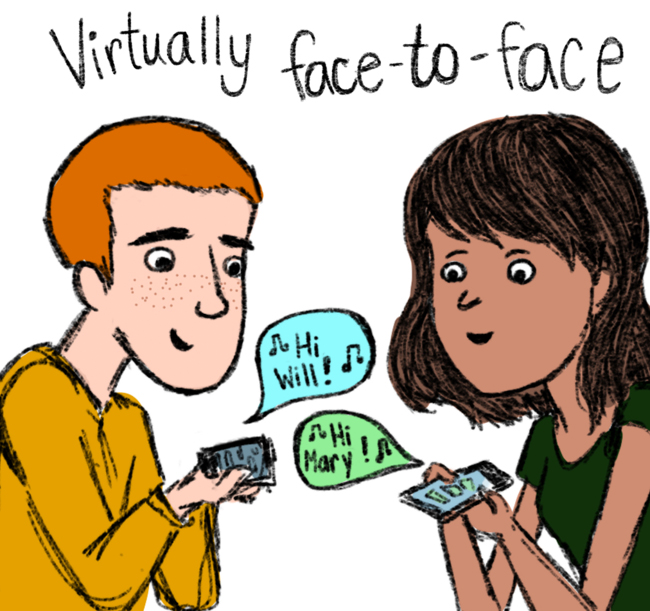Social media offers users a way to connect with the world around them; at least, that’s what its creators want users to believe. As platforms grow in popularity, face-to-face conversations diminish in favor of virtual chats, shares and tags. The virtual world supplants the real world. Social media has lowered the value of human interaction, and verbal conversations are becoming rarer and rarer.
Rarer, yes, but not altogether extinct, say Dan Jacoby and Pat Hull, creators of the MotorMouth app. Bombarded by texts, Tweets, Instagram filters, Facebook posts and Tumblr’s 68.8 billion posts, MotorMouth offers the one thing sorely lacking from social media: an actual voice.
Think of it as Twitter, but with audio. The free app uses smartphones’ GPS capability to “select and play recordings of others nearby,” according to the app’s website. “Now we’re talkin’,” the slogan tells you.
Beyond the benefits of richness and subtleties heard through the audio, MotorMouth forces social media to become far more personal.
Much like a fingerprint, a voice is often as distinctive as a physical appearance or mannerism. Rather than judge an individual’s “About” section on Facebook or Twitter handle, Jacoby and Hull challenge social media users to connect on a more intimate level.
By introducing humanness to social media, there’s a chance that social media can rekindle the fire that made it so popular at its onset.
Back in the time of braces and middle school dances, Myspace gave users a way to make screen names unique. Facebook promised, and delivered, when it added a chronological component: All of life’s big moments could be tagged and celebrated with hundreds of other users. Twitter offered sanctuary to those with quick comments not worthy of a full-blown post, and media outlets transformed that platform into a hub of breaking news.
Despite all the benefits, social media lost its identity. Every account became a mask, something anyone could create and hide behind. Authenticity went the way of Myspace. Marketers began to analyze “likes” and “follows” to target demographics. A disconnect between the individual and the account name or handle grew larger and larger until the two existed in separate worlds.
Now, there are two kinds of conversations. The first is face-to-face and in-person — a human interaction. The second is virtual, instant and never to be spoken of outside the digital world.
Technology that can bridge the gap between the two offers hope that a new level of humanness will find a place in an increasingly virtual world.
Just not for Android users — that version of MotorMouth is still in the works.
Email Chris Weber at cmweber@email.wm.edu.

